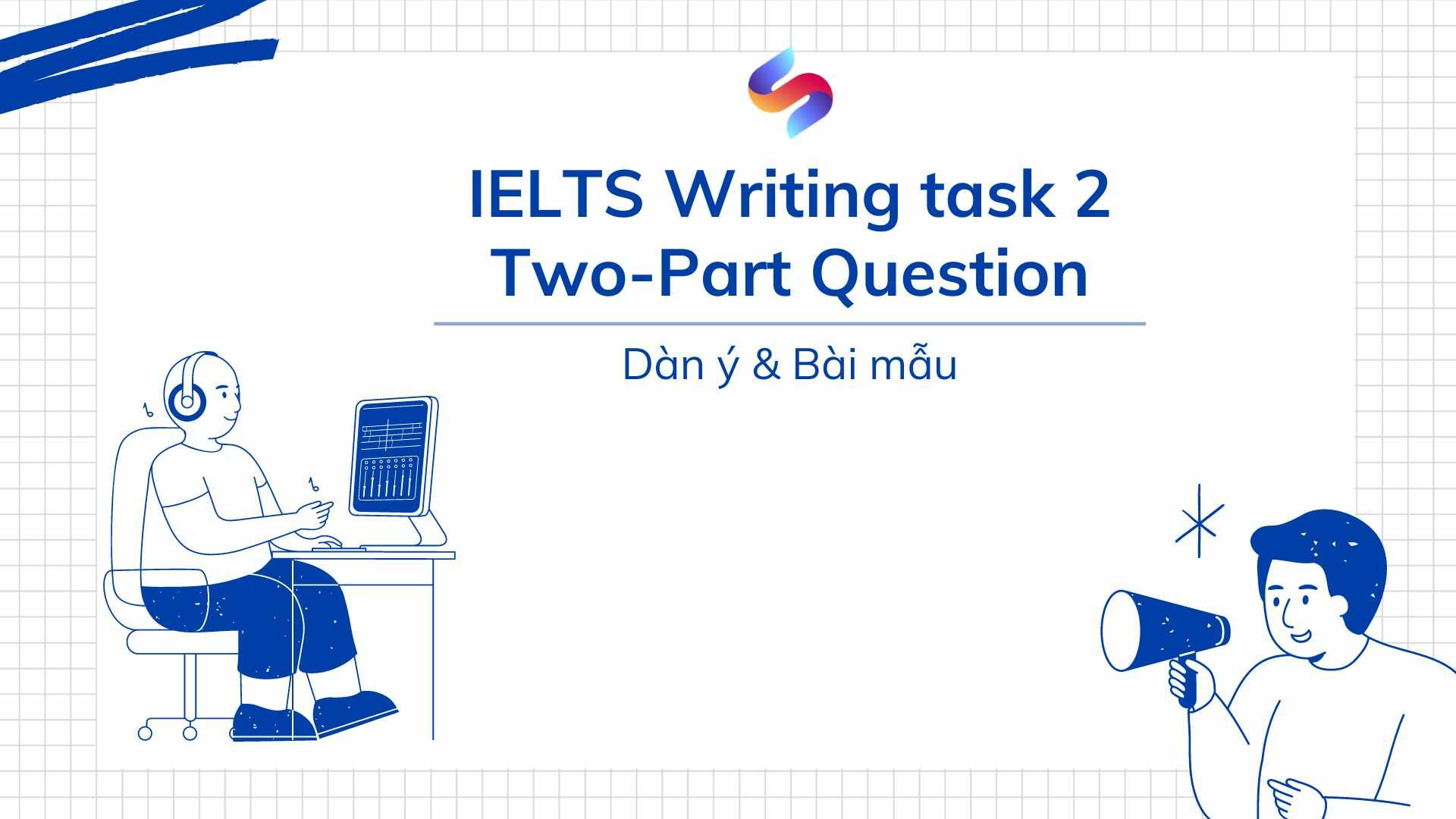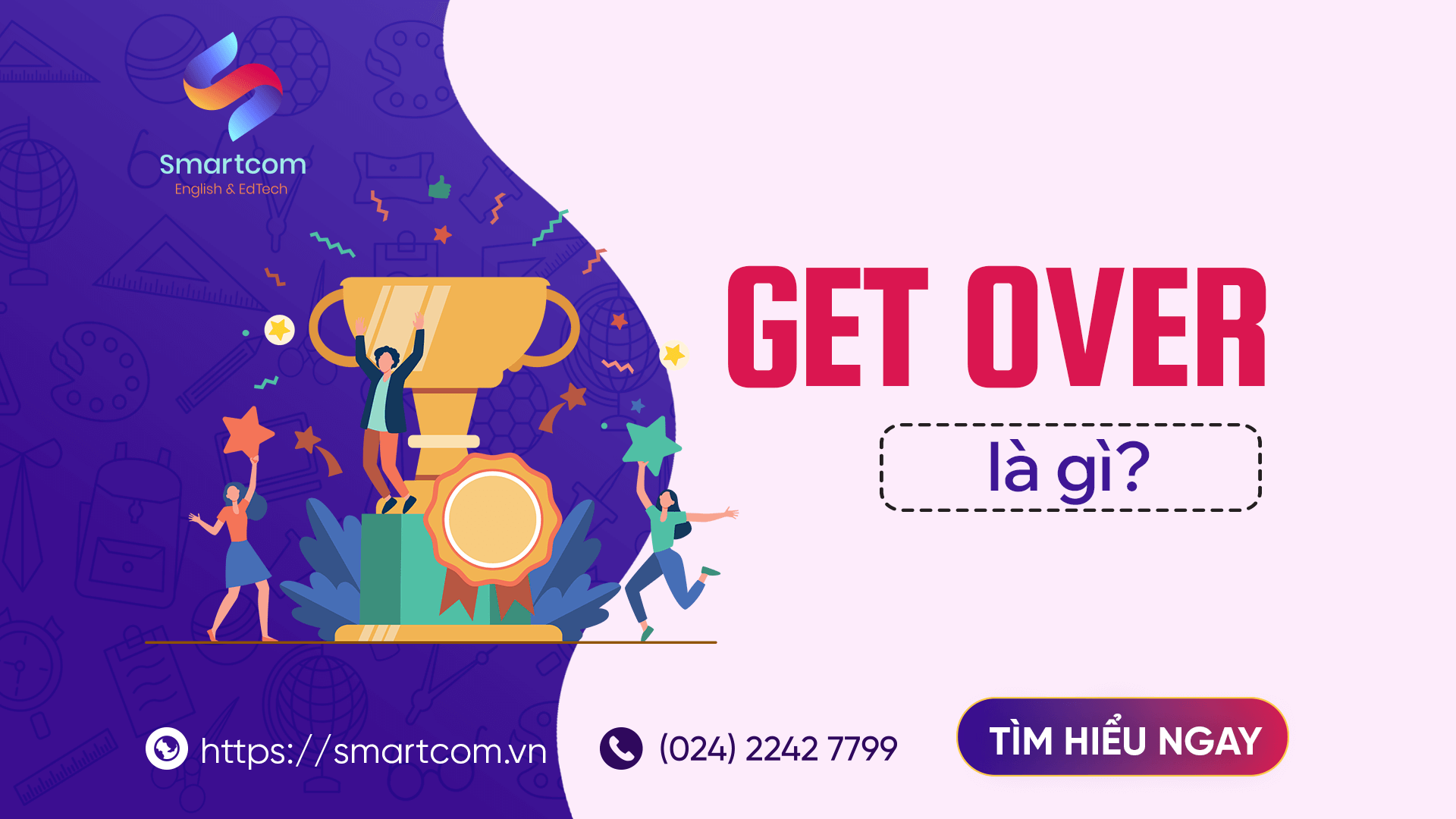Dạng bài Two-Part Question trong IELTS Writing Task 2 yêu cầu thí sinh trả lời hai câu hỏi liên quan đến một chủ đề cụ thể. Chủ đề thường được trình bày trong một đoạn văn ngắn, sau đó là hai câu hỏi. Thí sinh cần đưa ra câu trả lời chi tiết và rõ ràng cho từng câu hỏi. Smartcom sẽ phân tích dạng bài này như sau:
Dạng bài Two-Part Question thường có cấu trúc như sau:
- Một câu ngắn giới thiệu chủ đề.
- Hai câu hỏi được đưa ra ở cuối đoạn văn, bắt đầu bằng các từ như “Why”, “What”, “How”, “Do you think”, v.v.
Ví dụ: “Many people believe that social networking sites have a huge negative impact on both individuals and society. Why do people think this way? (1) What can be done to combat these negative effects? (2)”
Hướng dẫn các bước làm bài
- Đọc kỹ đề bài:
- Hiểu rõ chủ đề và xác định hai câu hỏi cần trả lời.
- Lên dàn ý:
- Viết ra các ý chính và ví dụ cho mỗi câu hỏi, lưu ý cần phải nhanh ở phần này.
- Cấu trúc bài viết như sau:
Introduction (Giới thiệu):
– Paraphrase lại chủ đề.
– Nêu rõ rằng bạn sẽ trả lời cả hai câu hỏi.
Body Paragraph 1 (Đoạn thân bài 1):
– Trả lời câu hỏi thứ nhất.
– Đưa ra lý do, ví dụ cụ thể và giải thích.
Body Paragraph 2 (Đoạn thân bài 2):
– Trả lời câu hỏi thứ hai.
– Đưa ra lý do, ví dụ cụ thể và giải thích.
Conclusion (Kết luận):
– Tóm tắt lại câu trả lời cho cả hai câu hỏi.
– Khẳng định lại quan điểm nếu cần thiết.
- Viết phần Introduction:
- Paraphrase lại chủ đề.
- Nêu rõ bạn sẽ trả lời cả hai câu hỏi.
- Viết phần Body Paragraph 1:
- Trả lời câu hỏi thứ nhất.
- Đưa ra lý do, ví dụ cụ thể và giải thích.
- Viết phần Body Paragraph 2:
- Trả lời câu hỏi thứ hai.
- Đưa ra lý do, ví dụ cụ thể và giải thích.
- Viết phần Conclusion:
- Tóm tắt lại câu trả lời cho cả hai câu hỏi.
- Khẳng định lại quan điểm nếu cần thiết.
Từ vựng và ngữ pháp ăn điểm
- Paraphrase:
- “Many people believe” → “It is widely believed that”
- “huge negative impact” → “significant adverse effects”
- Transition words:
- First and foremost,
- Additionally,
- Furthermore,
- In conclusion,
- Complex sentences:
- “One of the primary reasons for this belief is that…”
- “This can be attributed to the fact that…”
- “To address these issues, it is essential to…”
- Vocabulary related to the topic:
- Social networking sites,
- Negative impact,
- Individual and societal well-being,
- Mitigation strategies
Lỗi sai thường gặp khi làm bài
- Không trả lời đủ hai câu hỏi:
- Chỉ tập trung trả lời một câu hỏi mà quên mất câu hỏi còn lại.
- Không đưa ra ví dụ cụ thể:
- Thiếu các ví dụ cụ thể để minh họa cho luận điểm của mình.
- Paraphrase không đúng:
- Không paraphrase đúng chủ đề, dẫn đến việc không đáp ứng yêu cầu của đề bài.
- Sử dụng từ vựng và ngữ pháp sai:
- Sử dụng từ vựng và ngữ pháp không chính xác làm giảm điểm.
Bài viết mẫu 9.0 dạng Two-Part Question
Đề bài: “Many people believe that social networking sites have a huge negative impact on both individuals and society. Why do people think this way? What can be done to combat these negative effects?”
Bài viết mẫu:
In recent years, social networking sites have become an integral part of modern life. While some argue that these platforms bring numerous benefits, many believe that they have a detrimental impact on both individuals and society as a whole. This essay will discuss the reasons behind this belief and suggest potential measures to mitigate the negative effects.
One of the primary reasons people think social networking sites have a negative impact is because of their addictive nature. Many individuals, especially teenagers, spend an excessive amount of time on these platforms, leading to decreased productivity and neglect of real-life responsibilities. For example, students who are addicted to social media may find it difficult to concentrate on their studies, resulting in poor academic performance. Furthermore, the constant exposure to idealized images and lifestyles on social media can lead to feelings of inadequacy and low self-esteem among users. This phenomenon, known as “social media envy,” has been linked to increased rates of depression and anxiety.
To combat these negative effects, several measures can be implemented. Firstly, raising awareness about the potential dangers of excessive social media use is crucial. Educational programs in schools and community centers can help inform individuals about the risks and encourage healthier online habits. Additionally, parents and guardians should play a proactive role in monitoring and regulating their children’s screen time. Setting limits on the amount of time spent on social media and promoting alternative activities, such as sports or hobbies, can help reduce the likelihood of addiction. Moreover, social networking companies should also take responsibility by implementing features that encourage users to take breaks and reduce screen time.
In conclusion, the negative impact of social networking sites on individuals and society stems from their addictive nature and the unrealistic standards they promote. However, by raising awareness, monitoring usage, and encouraging healthier habits, it is possible to mitigate these adverse effects and ensure that social media can be used in a more balanced and beneficial manner.
Xem thêm:
Nên thi IELTS trên giấy hay máy tính?
Tổng hợp đề IELTS Writing Task 2 theo chủ đề phổ biến
Hy vọng với các bước giải quyết dạng bài Two-Part Question trong phần thi IELTS Writing Task 2 ở trên, bạn đã nắm được cấu trúc bài thi và có thể ghi điểm cao. Bạn có thể đọc thêm chiến thuật giải quyết các dạng bài tại kho tài nguyên IELTS của Smartcom nhé!


![[PDF + Audio] Tải Sách IELTS Cambridge 19 (Kèm đáp án)](https://smartcom.vn/blog/wp-content/uploads/2024/06/ielts-cambridge-19_optimized.png)



![[PDF + Audio] Tải Sách IELTS Cambridge 17 (Kèm đáp án)](https://smartcom.vn/blog/wp-content/uploads/2024/07/sach-ielts-cambridge-17_optimized.jpg)
![[PDF + Audio] Tải Sách IELTS Cambridge 15 (Kèm đáp án)](https://smartcom.vn/blog/wp-content/uploads/2024/07/ielts-cambridge-15_optimized.jpg)








